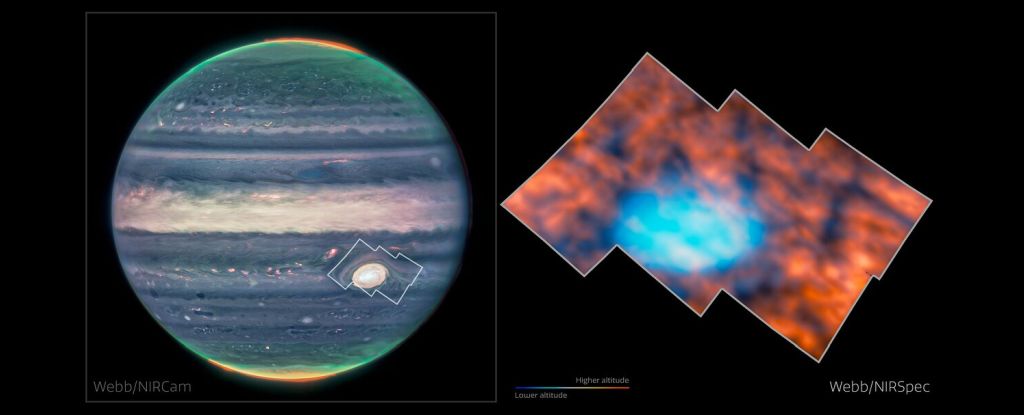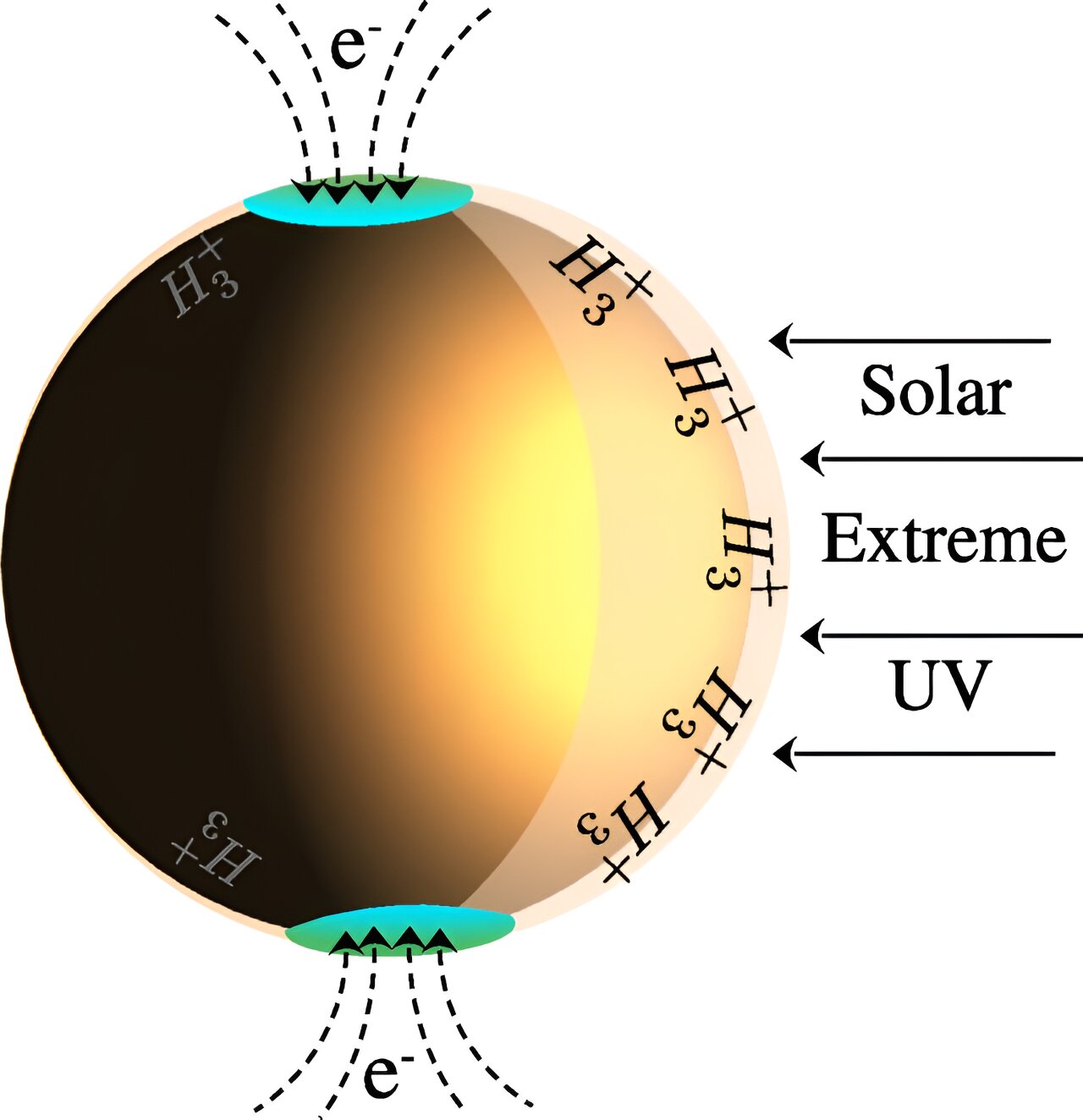
Jupiter's Upper Atmosphere: A Surprising Discovery
The James Webb Space Telescope, a collaboration between NASA, ESA, and the Canadian Space Agency (CSA), has provided astronomers with unprecedented insights into Jupiter's upper atmosphere. The region above the gas giant's iconic Great Red Spot has been found to host intricate structures and vibrant displays of northern and southern lights.
Astronomers have long known that Jupiter's upper atmosphere is the interface between the planet's magnetic field and its underlying atmosphere. However, recent observations using the NASA/ESA/CSA James Webb Space Telescope have revealed a more complex picture than previously thought.
One possible explanation for these new findings is gravity waves, similar to waves crashing on a beach. These atmospheric waves are much weaker on Earth than those observed on Jupiter by Webb and can travel up in altitude, changing the structure and emissions of the upper atmosphere.
The discovery of these intricate structures above Jupiter's Great Red Spot challenges our understanding of this gas giant's atmosphere. Further research is needed to fully understand the mechanisms at play and what they might reveal about Jupiter as a whole.
Historical Perspective: The Evolution of Jupiter's Great Red Spot
The Great Red Spot on Jupiter, a massive anticyclone vortex twice the size of Earth, has been observed for centuries. Italian astronomer Gian Domenico Cassini first discovered it in 1665 and described it as 'a permanent one which was often seen to return in the same place with the same size and shape.'
However, modern observations suggest that winds in the storm reach up to 400 miles an hour, and its red color may be due to interaction between elements in Jupiter's atmosphere and cosmic rays or other forms of radiation. Historical records have been used to track the size and movement of the spot over time, revealing that it has shrunk and become rounder, suggesting it could have formed from unstable winds that produced an observable proto-storm that disappeared then returned.
Dark Matter Particles Colliding in Jupiter's Atmosphere?
A pair of astrophysicists from Princeton University and the SLAC National Accelerator Laboratory found possible evidence of dark matter particles colliding in Jupiter's atmosphere. They suggest that these particles might be pulled to Jupiter by its strong gravity and collide with its ionosphere, producing light as a result.
However, it is still not clear if the amounts of H3+ they measured were more than could have been generated by other means. Further research is needed to confirm their theory and provide definitive evidence of dark matter particles colliding in Jupiter's atmosphere.





